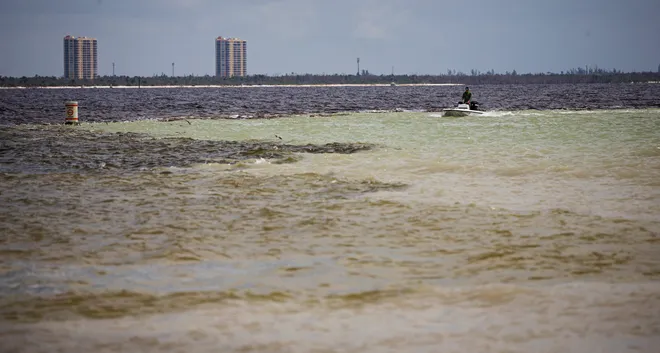Originally published in the Fort Myers News-Press by Chad Gillis on August 13, 2024
Tropical Storm Debby played out similar to National Weather Service forecasts for Southwest Florida with impacts to homes, businesses, roads and cars.
And although nature has evolved with hurricanes, the ecosystem still bears the scars of a tropical storm: Debby left her mark in the form of flooded sea turtle nests, plenty of storm surge and some heavy rains.
“The first thing with the storm is that this was in perfect unison with an already extremely high tide because of the moon phase,” said Calusa Waterkeeper Codty Pierce. “If they happen on a full moon or a new moon or within that couple of days period, we’re dealing with high water. We had well defined energy and bands and it was displacing a good bit of water onto land, and that coupled with moon surge and rainwater, all that water had nowhere to go.”
Several inches of rain fell along the coast during a storm surge that reached 3.3 feet in downtown Fort Myers, according to National Weather Service records.
Waterkeeper worried about pollution along the coast
Pierce is worried about all the legacy sediments and nutrients that have built up onto the landscape.
A lot of that pollution was suspended and flushed toward the coast.
“All those inner lagoons in the barrier island seemed to have been festering over the past few months and it’s just poor water quality,” Pierce said. “And the surge that came through flushed all of it. I think all the lagoons and the nutrients were in there and that’s legacy nutrients because it’s been sitting there.”
…
Flows through the W.P. Franklin Lock and Dam in Alva reached 12,000 cubic feet per second, according to the U.S. Army Corps of Engineers.
That’s several times the amount of flow needed to harm the Caloosahatchee River’s estuary, which was blown out by the heavy amount of freshwater flowing off the river’s watershed.
Continue Reading

























